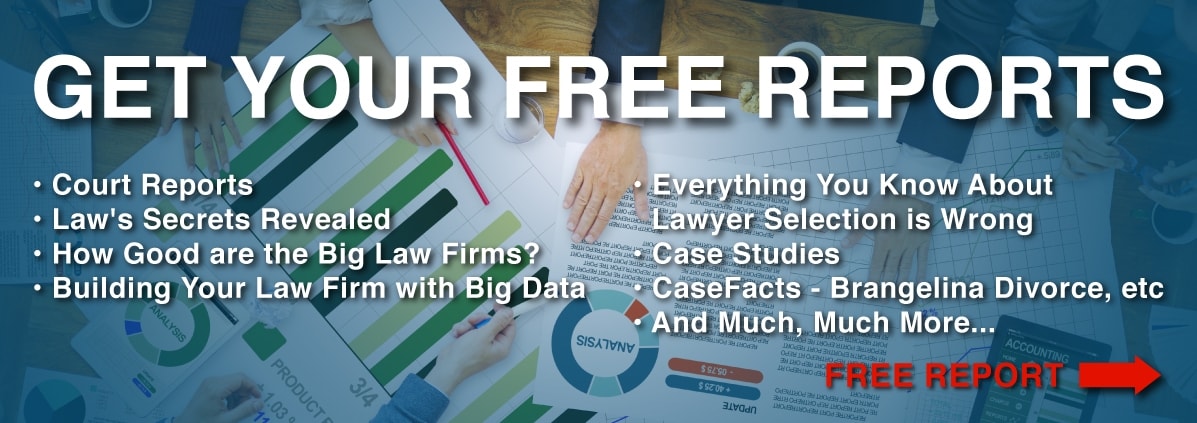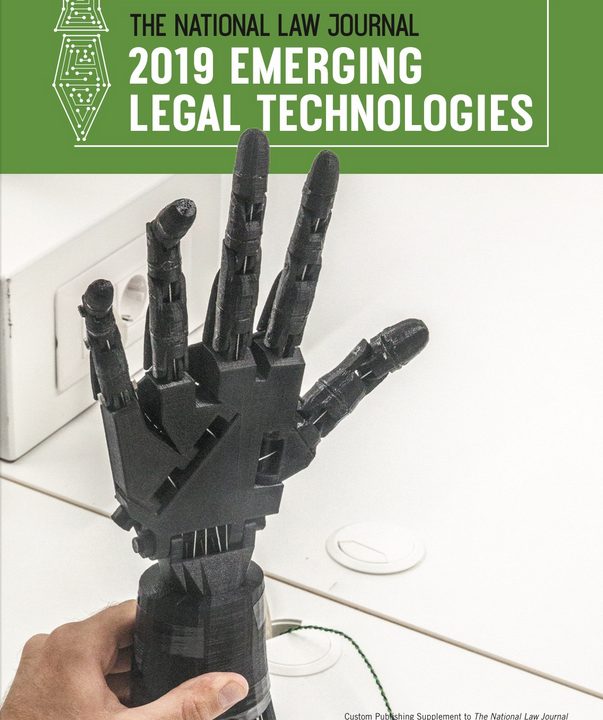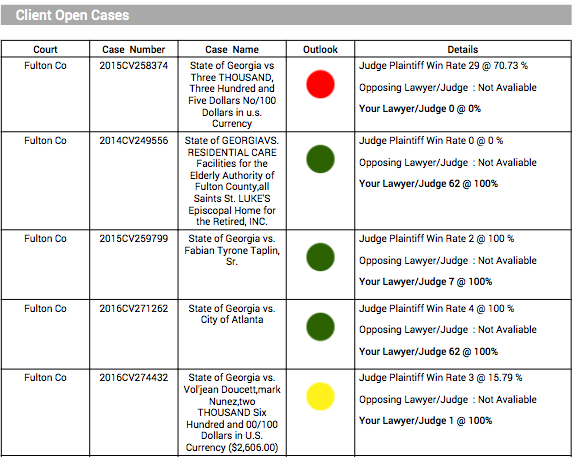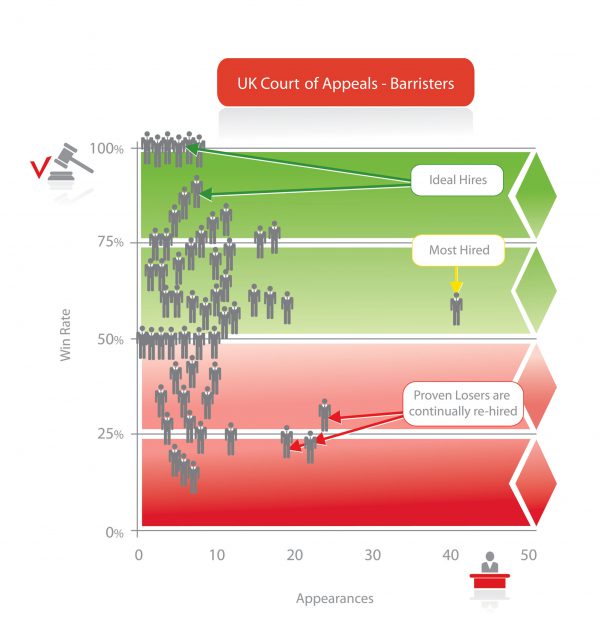Premonition is an artificial intelligence and data analytics firm focused on the legal business. Its software mines court judgments and breaks down litigators’ track records, identifying win rates on different matters.“We keep track of wins and losses and all kinds of interesting things that have never been done before,” said Toby Unwin, who, along with Guy Kurlandski, runs the U.S.-based company.
It’s premised on the notion that the only thing that matters to a client in litigation is winning. “Winning is the best indicator. I truly believe that if I am the client, I want to win,” said Unwin, who holds an LL.B. from a U.K. law school and developed the system.
At press time, the company, which is operating in the U.K. and the United States, expected to launch its Canadian database in September. It currently boasts that it has the world’s largest collection of court data, which grows daily.
Success rates are not something normally tracked in the legal business and likely not one that will be welcomed with open arms, but why not? Many organizations publish key performance indicators (think investment firms and money managers). Why shouldn’t consumers know more about high-billing lawyers and a law firm’s track record when it comes to the core service for which they are being retained?
Big data and predictive analytics have found their place in a number of industries, particularly retail and financial services to optimize pricing and push more products.
Now it is seeping into the legal business, which with its data-heavy information is ripe for analysis. That should provide a note of caution for an industry that relies on combing information and charging a premium for analysis.
Premonition is one of many companies looking to capitalize on the opportunity. Firms like ContractRoom, and Kira, which analyze contracts, are a smattering of emerging companies that use artificial intelligence and analytics to examine legal information and tackle workflow and opportunities in the legal business.
In Premonition’s case, its web-crawling technology scours rulings to examine judgments and outcomes and breaks the information into readable and actionable reports and charts that can be used for litigation analysis and when making decisions about who to hire or fire. Firms can also use it to identify attractive litigation clients, based on the client’s record in previous actions.
An in-house lawyer can scan the database to find which counsel have acted on similar matters and see their win rate. If you’re looking to laterally hire a litigation associate, you can check out his or her record. Know who the judge is, then check out how he or she has ruled in the past on such matters and cross-reference it to the lawyers you are using.
Unwin said that, according to Premonition’s statistics, “30.7 per cent of case outcome is dependent upon the relationship between the lawyer and the judge.”
More interestingly, the system can also examine the length of time that a lawyer typically spends on a case and the cost based on court judgments, allowing for some analysis around legal fees.
It identifies outliers — lawyers who either outperform or underperform. The company likens its software to “Moneyball for Law,” an analogy to the baseball story by writer Michael Lewis, where the Oakland Athletics used number crunching in their hiring decisions, rather than simply the gut instinct of scouts when putting together a winning roster at a lower cost than the team’s competitors.
In keeping with the baseball analogy, a good hitter strikes out almost seven out of 10 times, so most batters will fall into a clump below the .300 mark. The legal business is somewhat similar with many of the litigators falling into a clump on a scatter chart. However, there are outliers, those who excel above the norm and those who fall below. For example, a lawyer might have a 100-per-cent record, but she has won only one case. Other lawyers might have 10 cases but zero rulings in their favour. The sweet spot is those lawyers who work on many cases and have an above-average winning rate.
Premonition cites an example where one of its reports was used to identify a lawyer who had won 22 cases in a row before a Nevada judge and the firm recommended that the legal team hire that lawyer as co-counsel. The matter settled within weeks.
Currently, the industry focuses on peer recognition, a form of backslapping, as the template for counsel selection, and an array of services exist for rating or ranking lawyers. But they are subjective. By combing and crunching data, Unwin believes you get a truer picture about results and abilities, based on objective findings.
It’s unlikely artificial intelligence and lawyer robots will replace the typical law firm and lawyer; however, such technologies and processes will change the way the industry operates and carries out its function.
More transparency around things such as litigation or contract analysis is only a start and will be welcomed by clients. How law firms and regulators respond to the emerging opportunities will be telling.
Jim Middlemiss is a principal at WebNewsManagement.com. You can follow him on Twitter@JimMiddlemiss.
Toby Unwin, Chief Innovation Officer at Premonition will be speaking on Sept. 20 in Toronto at the first Emerging Legal Technology Forum conducted by LegalX and Thomson Reuters (publisher of Canadian Lawyer).








